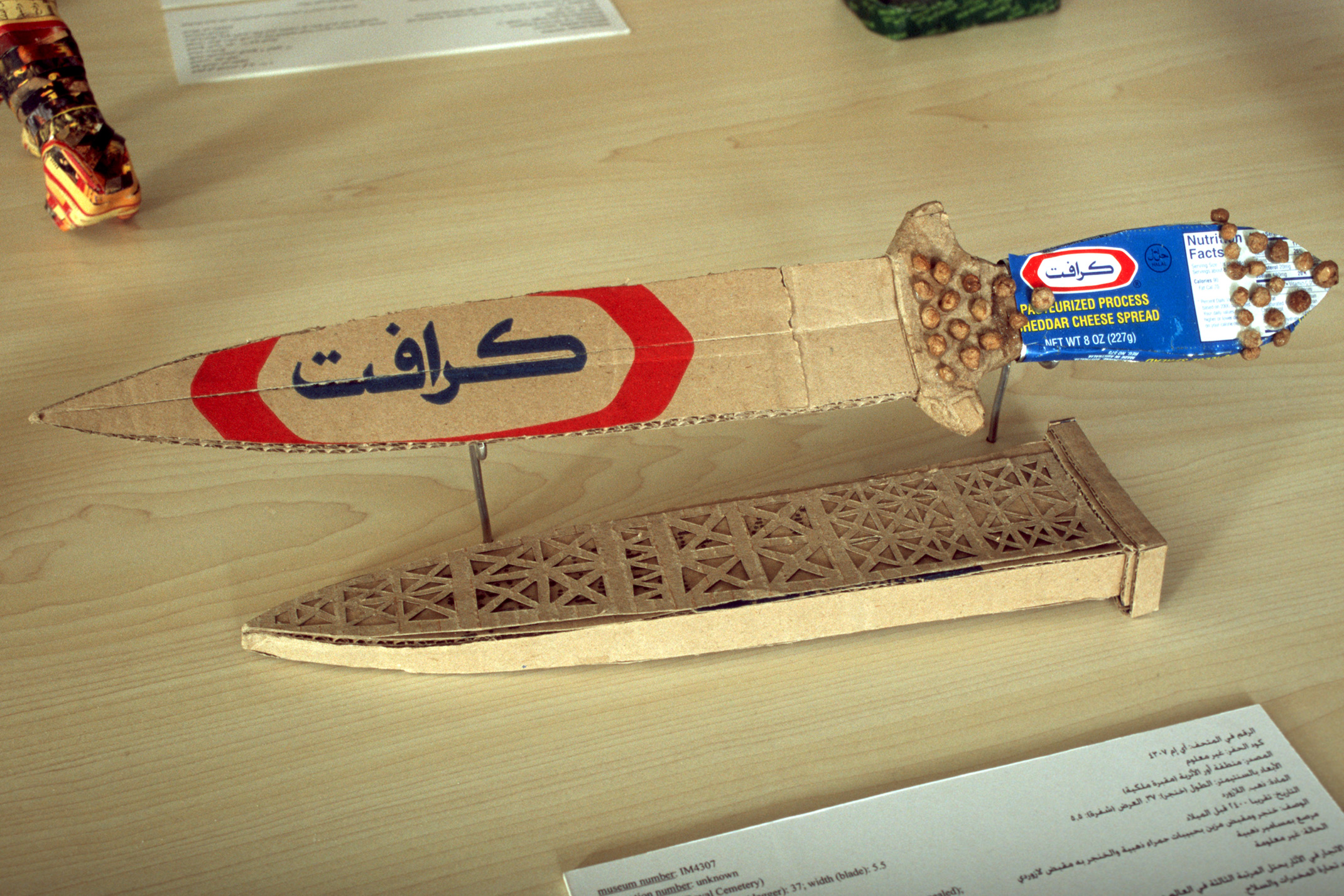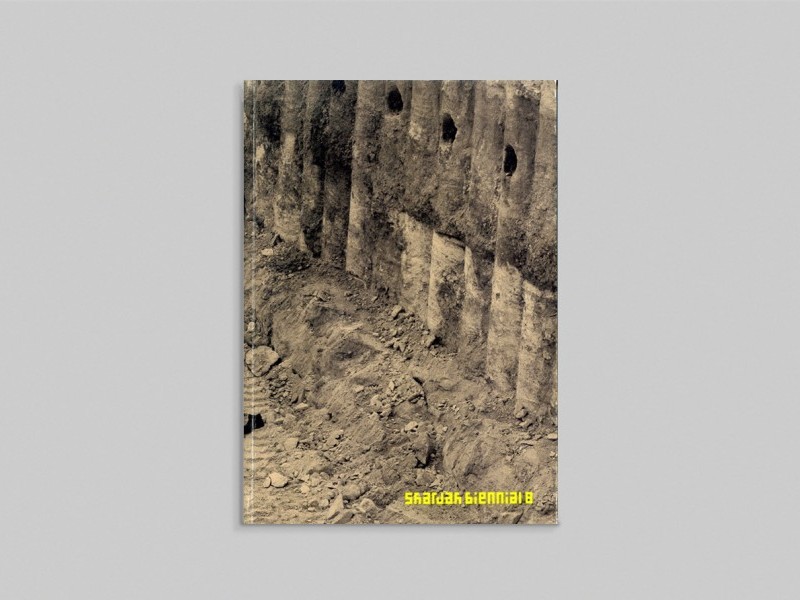
The invisible enemy should not exist, 2007
Michael Rakowitz
The invisible enemy should not exist, 2007
wooden table, artifacts constructed from Middle Eastern food packaging and newspapers, labels, drawings, sound
Installation view
search


Michael Rakowitz
The invisible enemy should not exist, 2007
wooden table, artifacts constructed from Middle Eastern food packaging and newspapers, labels, drawings, sound
Installation view
The invisible enemy should not exist, 2007 Michael Rakowitz’s most recent project, was originally conceived for a solo exhibition beginning of this year at Lombard-Freid Projects in New York City. It is an attempt to reconstruct the archeological artefacts looted from the National Museum of Iraq in the aftermath of the American invasion in April 2003. For the Sharjah Biennial, an updated version of this work will be shown, featuring 17 objects produced in late February and early March 2007. To date, 70 artifacts have been replicated to scale.
The title of the exhibition takes its name from the direct translation of Aj-ibur-shapu, the ancient Babylonian street that was used as a processional way and that ran through the Ishtar Gate. This magnificent blue tile gate, which was excavated in Iraq in 1902-1914 by German archeologist Robert Koldewey, is on permanent exhibition at the Pergamon Museum in Berlin. In the 1950s, the Iraqi government rebuilt the gate; close by stands a reconstruction of the ancient city of Babylon, created by Saddam Hussein as a monument to his own sovereignty. Today the reconstructed Ishtar Gate is the site most frequently photographed and posted on the Internet by US servicemen stationed in Iraq.
The invisible enemy should not exist unfolds as an intricate narrative based on extensive research about the artefacts stolen from the Museum, the current status of their whereabouts, and the series of events surrounding the invasion, the plundering and related protagonists. Alluding to the implied invisibility of these artefacts—initial reports about their looting were inflated due to the “fog of war,” stated Museum officials—the reconstructions are made from the packaging of Middle Eastern foodstuffs and local Arabic newspapers, moments of cultural visibility found in cities across the United States. The objects were created together with a team of assistants using the University of Chicago’s Oriental Institute database, as well as information posted on Interpol’s website. This version of the project represents the incipient stage of an ongoing commitment to recuperate the over 7,000 objects that remain missing.
A series of episodic drawings punctuate the installation. The drawings reveal a narrative that includes the story of Dr. Donny George, former President of the Iraq State Board of Antiquities and Heritage and Director General of the National Museum in Baghdad, who worked tirelessly to recover looted artefacts. Under Saddam Hussein, Dr. George worked at archaeological sites to avoid Ba’ath Party meetings and also sidelined as a drummer in a band called 99%, which specialized in covers of Deep Purple songs. A version of their “Smoke on the Water,” recorded especially for this project by the New York-based Arabic band Ayyoub, becomes the sound background for the show.
Updated with newly reconstructed objects and installed in the Sharjah Art Museum, which is located only 800 miles away from the National Museum of Iraq, the project sheds light on the erosion and loss of humanity and cultural heritage due to greed, capitalism and thoughtless conquest – an irretrievable loss that can be paralleled with the loss of natural heritage due to similar interests, which go hand in hand.
This project was part of Sharjah Biennial 8.

This catalogue accompanied Sharjah Biennial 8, which attempted to renegotiate the relationship between art and ecology into a system of cohabitation.

The second book in the Still Life: Art, Ecology and the Politics of Change series, documents Sharjah Biennial 8 as it was on view.